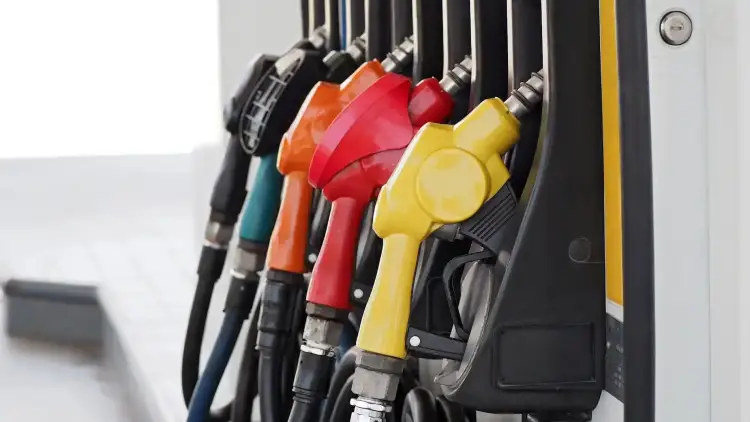Ready to change car ownership? Make sure your car insurance moves with it! This guide will simply and clearly show you how to transfer car insurance, step by step.
When you plan to transfer car insurance, getting your paperwork ready beforehand saves time and hassle. Think of it as preparing your checklist for a smooth vehicle insurance transfer process.
The Key Documents You Will Need
Before you begin the car insurance transfer process, gather these important papers. Having them all ready helps avoid delays.
Your Original Insurance Policy Certificate: This is the main document that proves you have insurance. It holds all the details about your current policy.
Vehicle Registration Papers (Both Old and New): You'll need the current registration details of the car, and crucially, the new registration papers that show the change of ownership. These documents are proof that the car's title has legally moved to the new owner.
Valid Identification (ID) Proof of the New Owner: This could be a national ID card or passport. The insurance company needs to verify the identity of the person who will now be responsible for the policy.
Important Conditions for Policy Transfer
Beyond the documents, there are a few conditions your policy must meet for a successful transfer. These are part of the standard policy transfer requirements.
Active Insurance Policy: Your current car insurance policy must not have run out or expired. Transfers usually happen only for policies that are still active.
No Pending Claims: If there's an ongoing claim for the car, you might need to settle it before the transfer can happen smoothly. Insurance companies prefer a clean slate.
Proof of Vehicle Sale or Purchase: The insurer needs clear evidence that the car has indeed been sold by one person and bought by another. This confirms the change in ownership that makes the insurance transfer necessary.
Now that you have your documents ready, let's go through the step-by-step process of how to transfer car insurance. Follow these stages for an easy vehicle insurance transfer.
Step 1:Tell Your Insurance Company
The very first thing you need to do is inform your current car insurance provider about the change in ownership. This is a critical part of the vehicle insurance transfer process.
Act Quickly: Most insurance companies ask you to tell them within a certain number of days after the car changes hands.
For most general policies, this is often within 14 days of the vehicle transfer.
For more detailed or “comprehensive” insurance plans, some companies may want to know even sooner, sometimes within 7 days.
Why It Matters: Telling them early ensures continuous coverage and helps avoid any problems related to the policy.
Step 2:Fill Out and Send the Transfer Form
Your insurance company will have a special form for this process. This step is key for any car insurance transfer documents.
Find the Form: You can usually download a “Motor Insurance Transfer Form” directly from your insurer's website or their online customer portal. If you prefer, you can also pick up a physical copy by visiting one of their local offices.
Fill It Carefully: Make sure you fill in all the details accurately. Missing information can slow things down.
Step 3:Show Proof of New Ownership
After filling the form, you'll need to attach specific car insurance transfer documents that prove the change in ownership.
Notarized Sales Agreement: This is a legal paper showing that the car has been sold and bought. It usually needs to be checked and approved by a public official (“notarized”).
Copy of Road Tax Receipt: This shows that the yearly road tax for the car has been paid.
Emission Test Certificate (If Needed): In some places, you might need to provide a certificate that shows your car meets pollution standards. This is sometimes called a “Pollution Under Control” certificate.
Step 4:Pay Any Required Transfer Fees
There are usually some small charges involved when you're transferring car insurance. These fees help cover the administrative work done by the insurance company.
Administrative Fee: This is a general charge for processing the transfer. It can typically range from around 55 AED to 150 AED or 60 SAR to 150 SAR.
Stamp Duty: This is a tax that varies from one local area to another. The amount depends on the laws where you live.
Check with Your Insurer: Always ask your specific insurance provider about the exact fees, as they can differ.
Step 5:Get Your Updated Policy Papers
Once all steps are completed and payments are made, you will receive your new car insurance policy documents. This completes your vehicle insurance transfer process.
Digital Copies: You might get an updated digital version of your policy very quickly, often within 3 working days.
Physical Copies: If you're waiting for a paper copy, it might take a bit longer, perhaps up to 7 working days, for it to arrive by mail.
As you go through your vehicle insurance transfer process, keep these important points in mind. They can help you avoid problems and make sure everything goes smoothly.
How Different Policy Types Affect Your Transfer
The kind of car insurance you have can change how the transfer works. It's important to know the policy transfer requirements for your specific plan.
Comprehensive Insurance Plans: If you have a detailed “comprehensive” insurance policy, which covers a lot of different risks, this type of plan can usually be fully transferred to the new owner without needing a brand new policy. You simply update the owner's information.
Third-Party Only Insurance: For simpler “third-party only” insurance, which covers damage you might cause to other people or their property, a full transfer might not be possible. In many cases, the new owner might need to get a completely new policy under their name instead of keeping the old one.
Common Mistakes to Avoid During Transfer
Making small mistakes can slow down your car insurance transfer. Be aware of these common errors to ensure a smooth process.
Delaying Your Transfer Notification: Not telling your insurance company right away (as mentioned in Step 1) can lead to issues, including a gap in coverage. Always notify them within the required timeframe.
Forgetting to Update Vehicle Details: Ensure all information about the car itself, like its registration number or model details, is correct on the new policy. Any errors here can cause problems later.
Missing Signatures on Your Transfer Form: Make sure all required parties (both old and new owners) have signed the transfer form exactly where needed. An unsigned form cannot be processed.
Options for Temporary Coverage
Sometimes, there's a short period between selling your car and the insurance transfer being complete. Ask your insurer about ways to stay covered during this time.
Transfer Grace Period (Often 30 Days): Some insurance companies offer a short “grace period,” often around 30 days. During this time, your old policy might still offer some coverage while the transfer is being finalized. This gives you a little breathing room.
Short-Term Interim Policies: In certain situations, you might be able to get a very short-term insurance policy. This “imterim” policy provides temporary coverage just for the few days or weeks until your full transfer is complete. It's a good way to avoid driving without insurance.
Here are some common questions people ask about transferring car insurance. Getting answers to these can clarify any last doubts you have about the vehicle insurance transfer process.
Q:Can I transfer my car insurance without the old owner being present?
A: For a smooth transfer, most insurance companies will ask for a special letter from the person who previously owned the car. This letter is called a “No Objection Certificate” (NOC). It shows that the old owner agrees to the policy being moved to the new owner. So, while the old owner doesn't always have to be there in person, their signed agreement (the NOC) is usually a must.
Q:What happens to my 'no-claim bonus' after transferring car insurance?
A: Your “no-claim bonus” (sometimes called a no-claim discount) is a reward you get for not making any claims on your insurance over time. Good news! If you keep your insurance coverage without any breaks, this bonus usually stays with you and transfers to your new policy. It's a benefit of maintaining a good driving record, and it typically moves with your policy as part of the overall policy transfer requirements.
Q:How long does the car insurance transfer process usually take?
A: When all your car insurance transfer documents are correct and complete, the entire process is often quite fast. Most insurance transfers are finished within 5 to 7 working days. However, delays can happen if documents are missing or if there are issues to resolve, so make sure everything is in order from the start.
Q:Is it better to cancel my old policy or transfer it?
A: Generally, transferring your existing policy is a better choice than canceling it and buying a new one. If you cancel your policy early, you might have to pay “surrender charges” or penalties. Also, transferring helps you keep continuous coverage for the car and often allows you to keep any benefits you've built up, like your no-claim bonus. It's a smarter move for preserving your coverage and savings.
Q:Is a car inspection needed when transferring insurance?
A: It depends on the insurance company and the car's condition. Some insurers might ask for a new inspection of the vehicle, especially for older cars (for example, those more than 5 years old) or if the car's “Pollution Under Control” (PUC) certificate has run out. An inspection helps the insurer check the car's current state before they agree to cover it under a new owner.
Read More:
2003 Toyota Camry Fuel Consumption:2025's Best Efficiency Tips
2025 Honda Civic Battery Size:Your Complete Owner's Guide
2025 Toyota Yaris 15-Inch Rims:Upgrade Guide & Maintenance Tips













